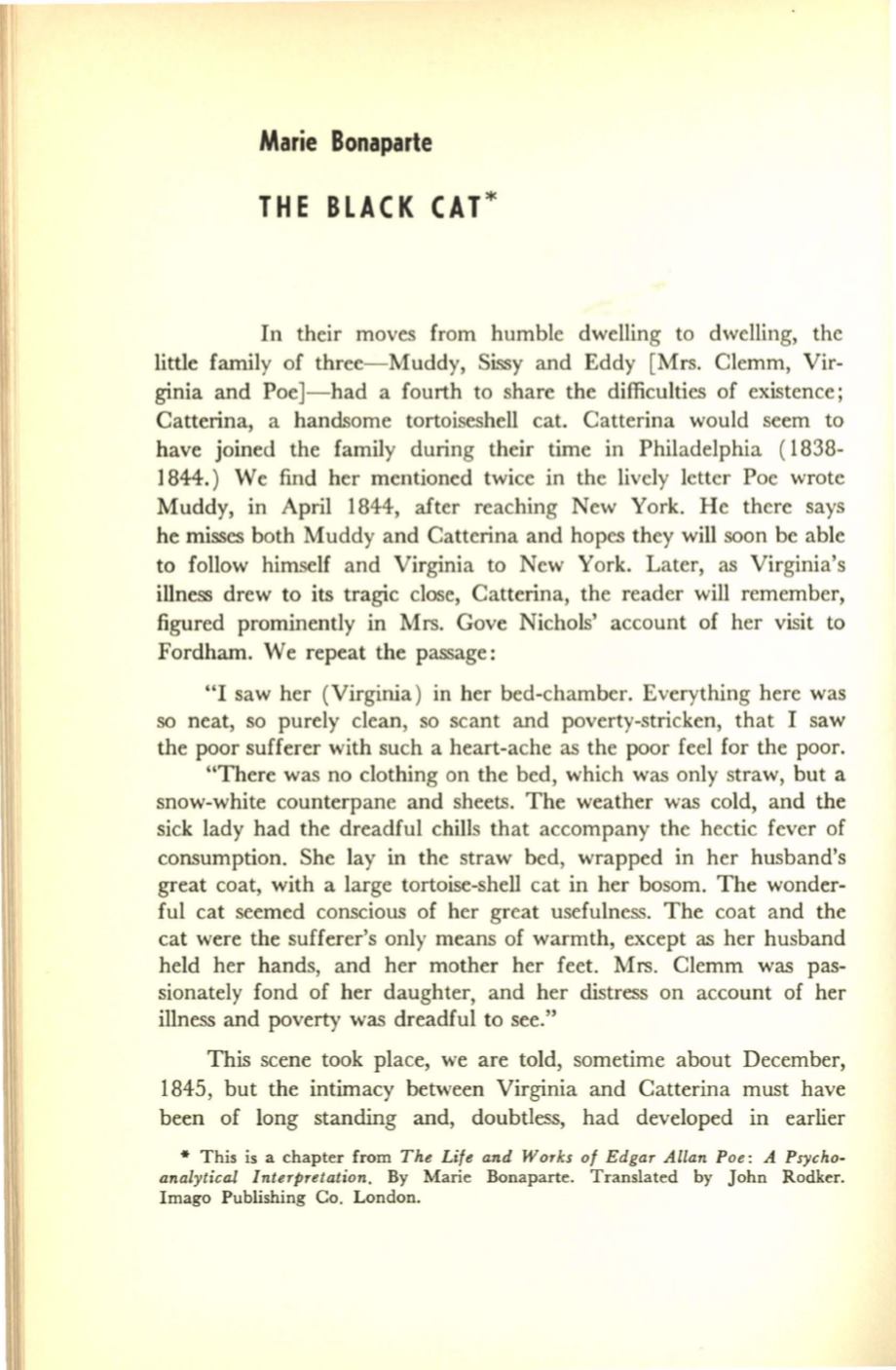
Marie Bonaparte
THE BLACK CAT *
In their moves from humble dwelling to dwelling, the
little family of three- Muddy, Sissy and Eddy [Mrs. Clemm, Vir–
ginia and PoeJ-had a fourth to share the difficulties of existence;
Catterina, a handsome tortoiseshell cat. Catterina would seem to
have joined the family during their time in Philadelphia (1838-
1844. ) We find her mentioned twice in the lively letter Poe wrote
Muddy, in April 1844, after reaching New York. He there says
he misses both Muddy and Catterina and hopes they will soon be able
to follow himself and Virginia to New York. Later, as Virginia's
illness drew to its tragic close, Catterina, the reader will remember,
figured prominently in Mrs. Gove Nichols' account of her visit to
Fordham. We repeat the passage:
"I saw her (Virginia) in her bed-chamber. Everything here was
so neat, so purely clean, so scant and poverty-stricken, that I saw
the poor sufferer with such a heart-ache as the poor feel for the poor.
"There was no clothing on the bed, which was only straw, but a
snow-white counterpane and sheets. The weather was cold, and the
sick lady had the dreadful chills that accompany the hectic fever of
consumption. She lay in the straw bed, wrapped in her husband's
great coat, with a large tortoise-shell cat in her bosom. The wonder–
ful cat seemed conscious of her great usefulness. The coat and the
cat were the sufferer's only means of warmth, except as her husband
held her hands, and her mother her feet . Mrs. Clemm was pas–
sionately fond of her daughter, and her distress on account of her
illness and poverty was dreadful to see."
This scene took place, we are told, sometime about December,
1845, but the intimacy between Virginia and Catterina must have
been of long standing and, doubtless, had developed in earlier
*
This is a chapter from
The Life and Works of Edgar Allan Poe: A Psycho–
analytical Interpretation.
By Marie Bonaparte. Translated by John Rodker.
Imago Publishing Co. London.


